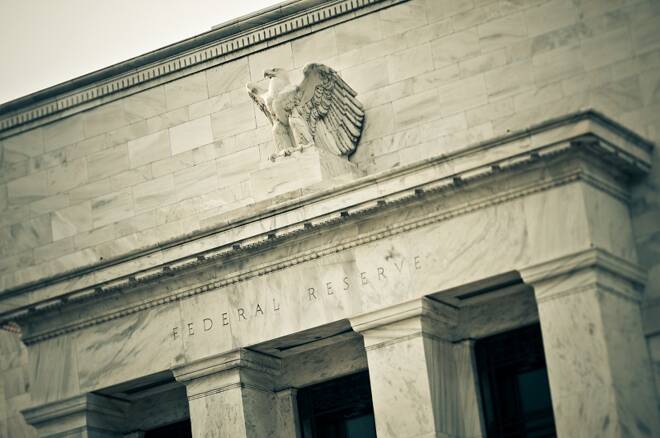Advertisement
Advertisement
Fed Members Bostic, Kashkari: Two Different Opinions on Rate Hikes
By:
Atlanta Federal Reserve Bank President Raphael Bostic started the ball rolling early Wednesday when he said with the U.S. economy at full employment, inflation at the Federal Reserve’s 2-percent goal, and the economic risks balanced, the U.S. central bank needs to keep raising interest rates. Kashkari said that he still believes the economy is not overheating yet, prompting him to continue his objection to rate increases.
After taking several weeks off following the central bankers’ summit at Jackson Hole, Wyoming, Fed speakers will be back in the news over the next couple of weeks before they go into “quiet time” ahead of the next Federal Open Market Committee (FOMC) monetary policy decision on September 26.
This is a major meeting because the central bank is widely expected to raise interest rates a third time this year. It is also likely to drop hints as to whether it will raise rates again in December.
Bostic the Hawk
Atlanta Federal Reserve Bank President Raphael Bostic started the ball rolling early Wednesday when he said with the U.S. economy at full employment, inflation at the Federal Reserve’s 2-percent goal, and the economic risks balanced, the U.S. central bank needs to keep raising interest rates.
This sounds like a departure from his earlier comments in which he stated he would probably vote for only one more rate hike this year.
“Now that the economy is standing on its own, it’s my view that we should be trying to move our policy back to a more neutral stance,” Bostic told the Chicago Council on Global Affairs, adding that the process will probably need to run another 12 to 18 months.
Bostic also said that the stimulative effects of recent tax cuts have yet to reach households, so consumer spending, already quite strong, could increase when it does. On the other hand, he said, uncertainty on trade policy is holding back business spending. Those risks, he said, for now are “perfectly counterbalancing” each other.
Kashkari the Dove
Also on Wednesday, Minneapolis Federal Reserve Bank President Neel Kashkari, a noted dove, offered his assessment of the economy and his opinion on Fed policy.
Kashkari said that he still believes the economy is not overheating yet, prompting him to continue his objection to rate increases.
In comments at a town hall forum in Bozeman, Montana on Wednesday, Kashkari explained that the Federal Reserve remains in the midst of a debate on whether there is still slack left in the labor force. According to Kashkari, “the fact that inflation has been very low” and that “wage growth has been muted” would suggest that we are not overheating.
The core PCE price index year/year hit the Fed’s 2% target in July and Core CPI year/year measure has been hovering near 2% as well. Kashkari explained that despite there being discussions about whether these inflation measures are accurately reflecting pricing pressures, “most measures are not perfect.” As a result, he noted that officials “look at a lot of different measures” and economists are also looking for ways to improve the inflation measures.
Kashkari defended the Federal Reserve’s policy setting interest rates for the country as a whole, acknowledging that there are regional differences in terms of inflation and employment, but “we’re one country.”
The Great Debate
Although the financial markets have essentially priced in a Fed rate hike in September, the points brought up by Fed Members Bostic and Kashkari suggest there is still room for debate for further rate hikes beyond next month. It also looks like the current trade policy could have an impact on further decisions, but there is just not enough information at this time to draw any conclusions.
About the Author
James Hyerczykauthor
James Hyerczyk is a U.S. based seasoned technical analyst and educator with over 40 years of experience in market analysis and trading, specializing in chart patterns and price movement. He is the author of two books on technical analysis and has a background in both futures and stock markets.
Did you find this article useful?
Latest news and analysis
Advertisement
